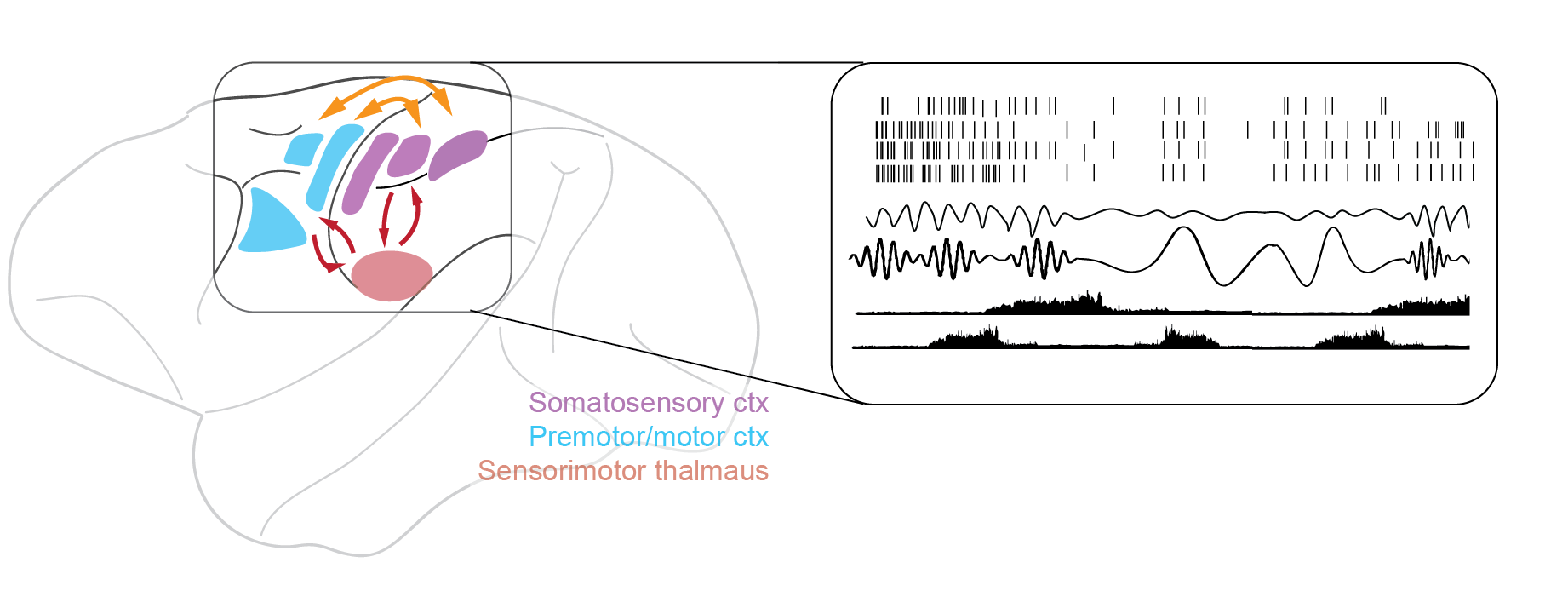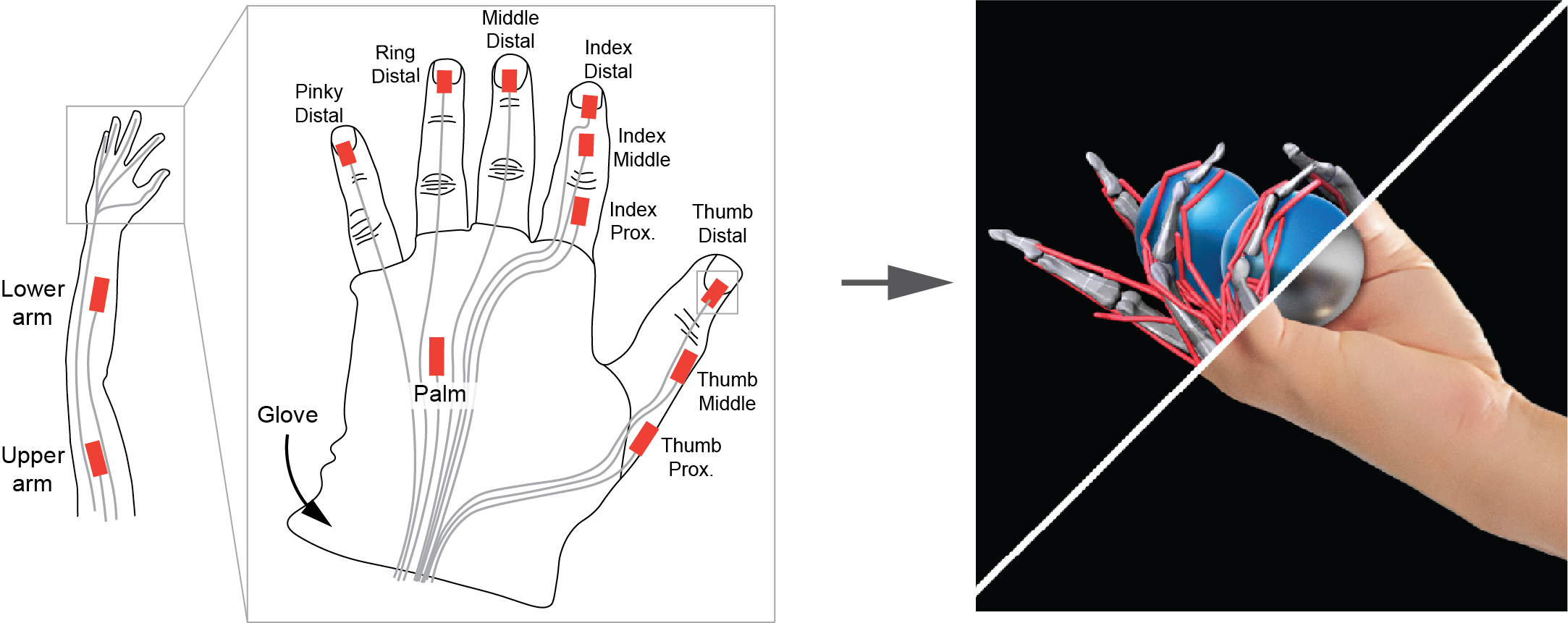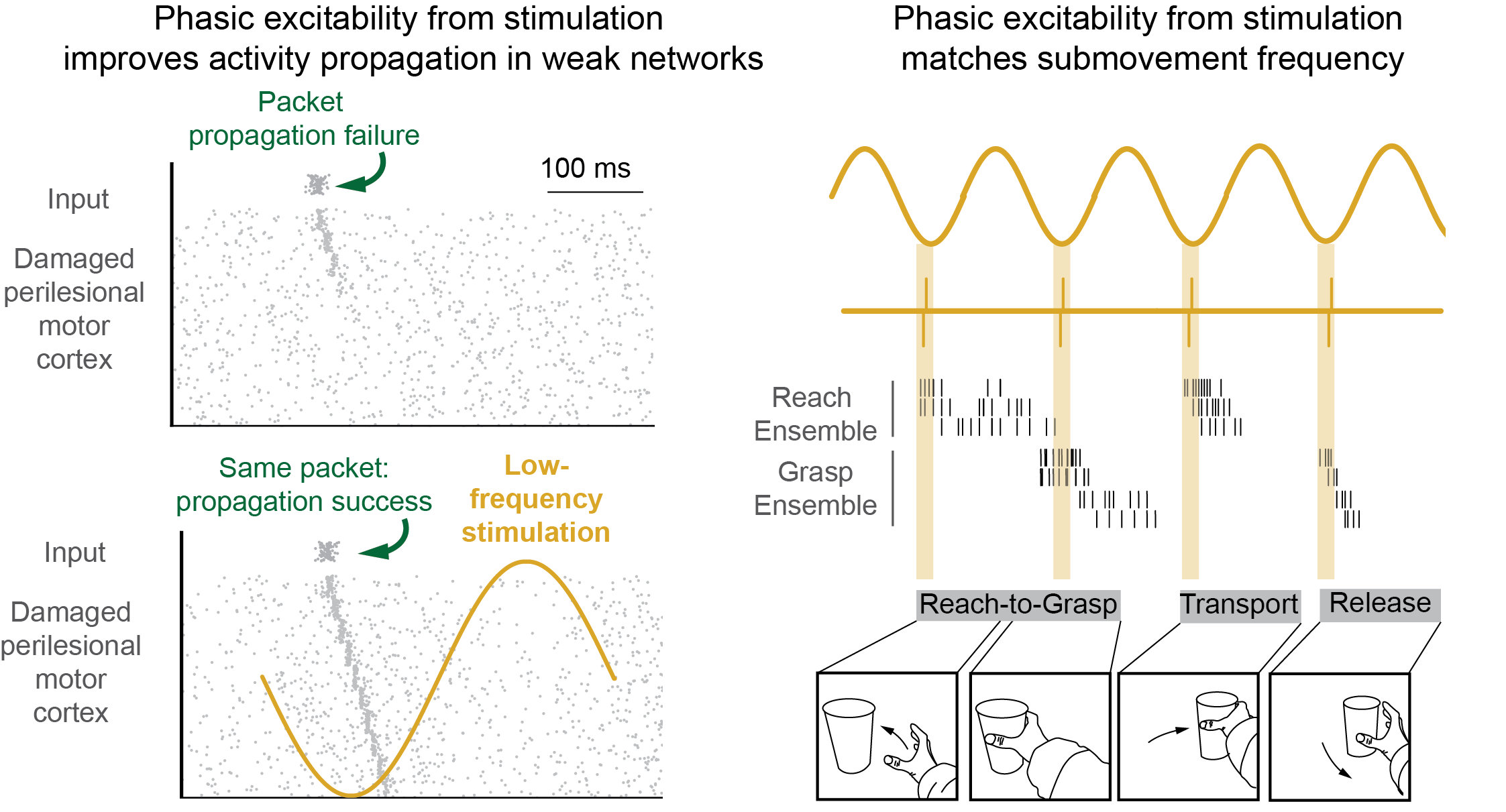When we perform dexterous movements, like playing the violin or
drawing, we monitor multiple sensory modalities to ensure our
movements are being executed as intended. If they aren’t,
adjustments to movement can be made on the fly. How do
the dynamics of brain activity enable such rapid and seamless
sensorimotor interplay?
The goal of our research is to uncover the network- level principles the brain uses to filter and integrate feedback to modify ongoing behavior, and to use these principles to develop neurophysiologically-grounded neurotechnology to rehabilitate and restore damaged sensorimotor systems.
We also seek to develop better assessments for measuring sensorimotor integration, better tools for measuring brain activity, and more precise descriptions of impairments in dexterous behavior in clinical populations.
The goal of our research is to uncover the network- level principles the brain uses to filter and integrate feedback to modify ongoing behavior, and to use these principles to develop neurophysiologically-grounded neurotechnology to rehabilitate and restore damaged sensorimotor systems.
We also seek to develop better assessments for measuring sensorimotor integration, better tools for measuring brain activity, and more precise descriptions of impairments in dexterous behavior in clinical populations.
Multi-area sensorimotor network dynamics underlying dexterity
We seek to uncover the brain dynamics underlying learning and execution of feedback-reliant, dexterous sensorimotor control. We approach this problem using high-density multi-area electrophysiology recording in awake and behaving animals performing dexterous learning tasks and closed-loop brain-machine interface tasks.We then apply multi-scale population neural analyses and develop models of network interactions to understand the content and flow of information through the sensorimotor network.

Models of dexterous movement control
How do we execute complex grasping and manipulation movements? Which joints move more versus less, and how does this change in the injured and recovering sensorimotor system? Towards answering these questions, we develop easily donnable sensorized monitoring systems (see example below) for collecting and modeling dexterous behavior in intact and clinical populations. We then use this data to fit models to better understand injury and recovery-related changes in control of movement.
Developing neurotechnology to restore movement
How does nerve stimulation influence control of movement? Might a particular patient benefit from nerve stimulation? To answer these questions we characterize the neurophysiologial changes underlying neurotechnology use, and design new invasive and non-invasive interventions for restoring sensorimotor network function. Together these efforts aim to move towards personalized neurotechnology prescriptions and therapies that are more impactful on network function.